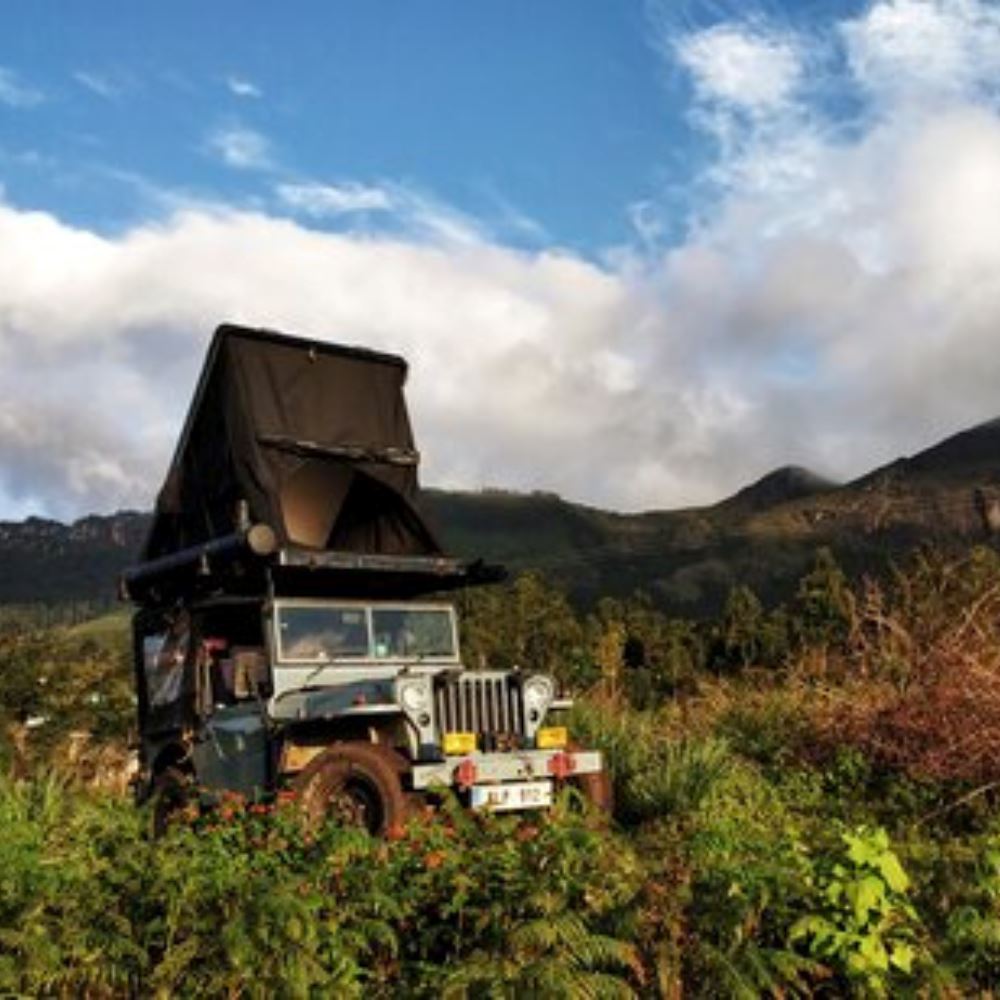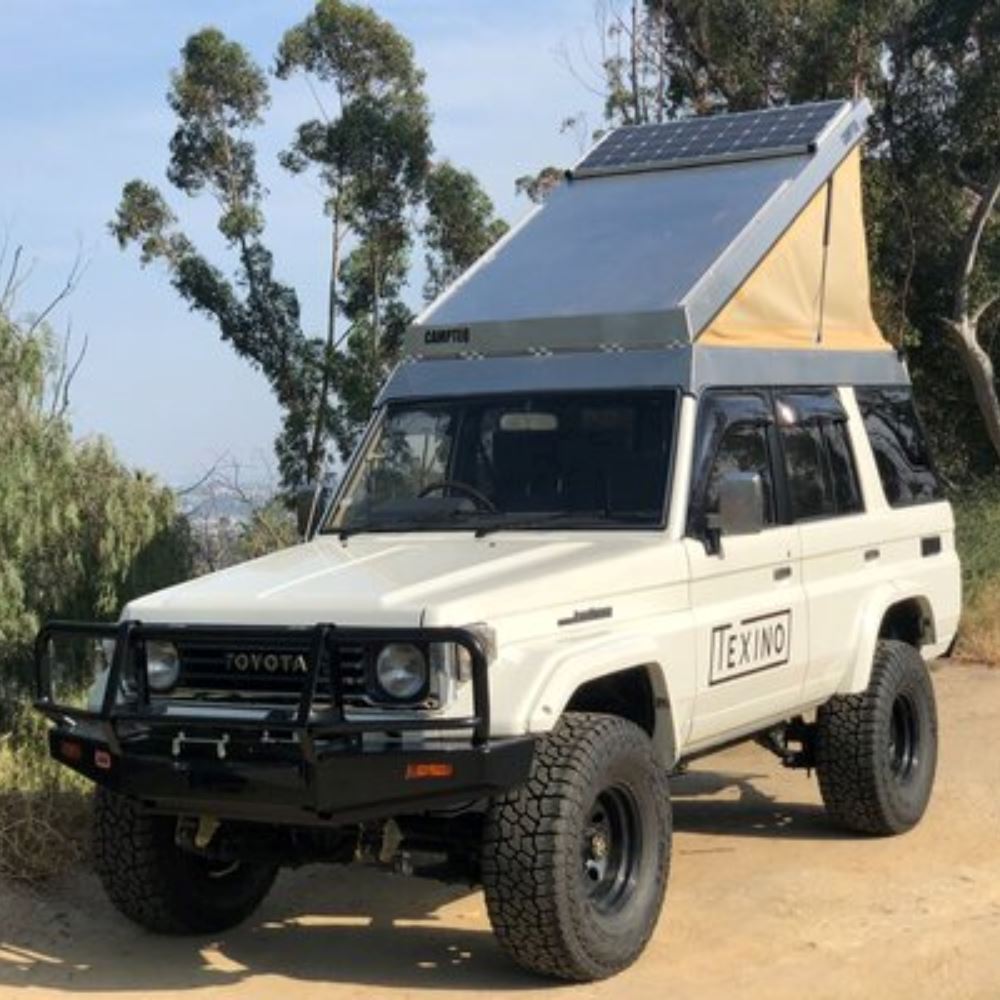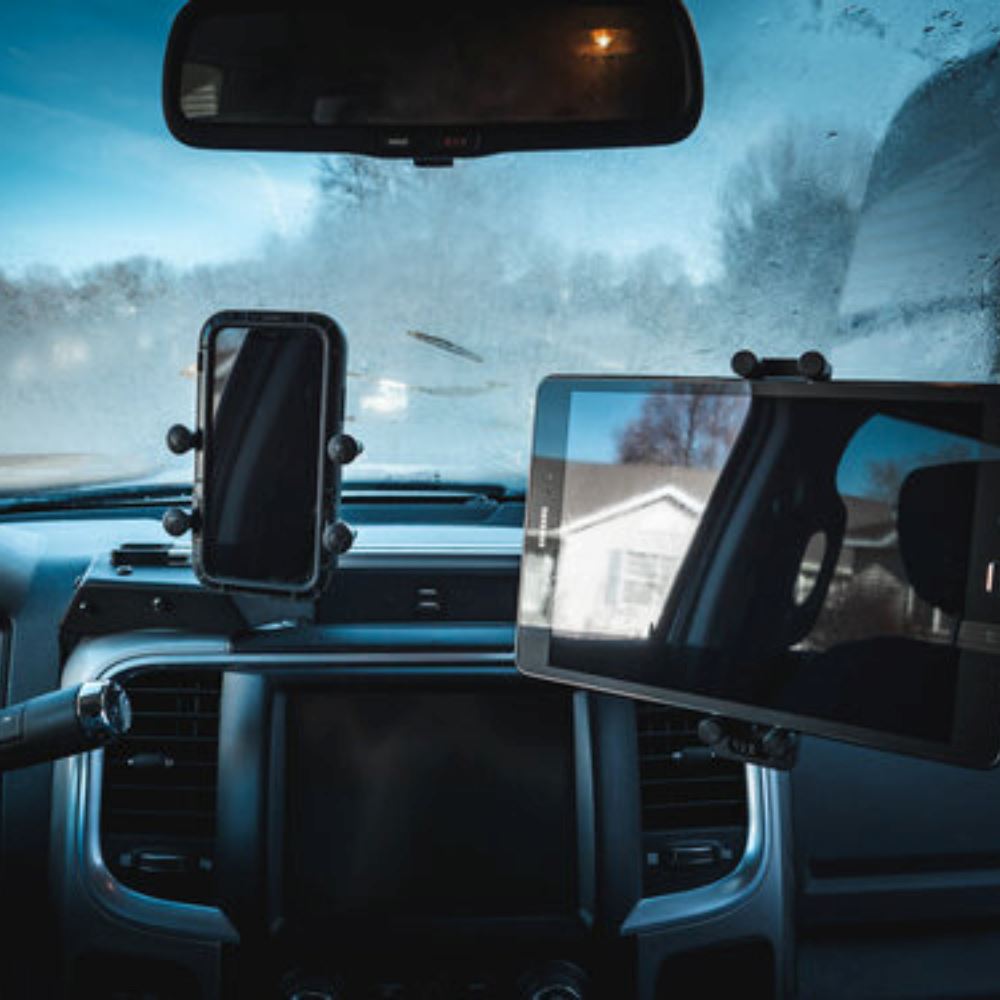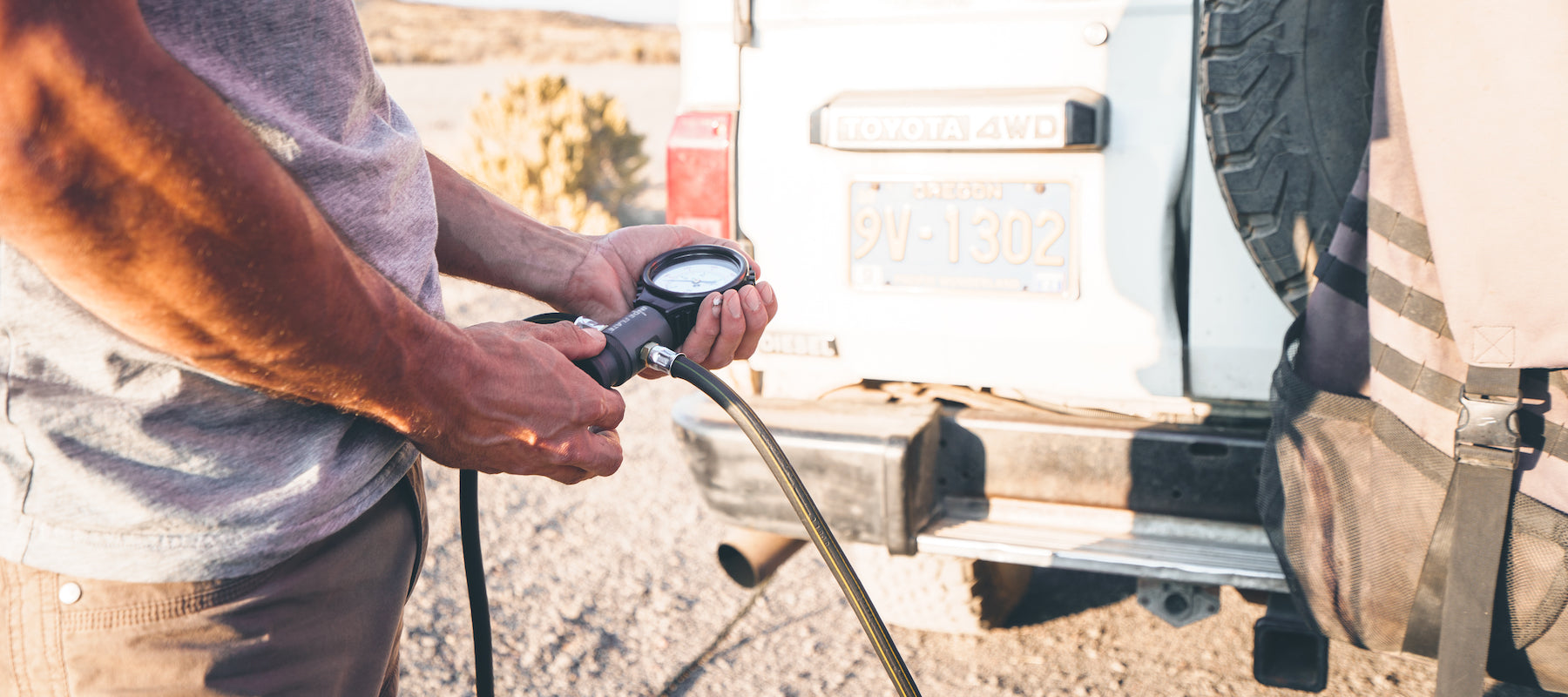It’s almost as if I’m in a dream. And then suddenly, someone shoves me, and I hear yelling and shouting. Wait, this is a dream. And just like that, I've been rudely dragged back to reality – a crowded train compartment in the Mumbai local on a particularly hot and sultry afternoon. Ugh, I’d give anything to get behind the wheel and hit the road right now.
I’ve been especially distracted with many such day-dreams these past couple of weeks because I recently got a taste of what living my dream would be like. I promised myself around two years ago that I’d take this Jeep, Veerappan, and travel across India. I didn’t know how or when, but I did know why. Every time I went home to Kerala and drove it, I had the urge to drive as far as the road would take me, and then some more.
But most people who’ve been in it for anything more than an hour will tell you that while it’s a lovely experience to drive around in short bursts, it’s silly to even consider cross-country travel. It’s not the most practical choice they'll say – it’s too small, too exposed and too uncomfortable to do long hours in. But most people forget that there are so many out there doing this happily on a motorcycle. And while I am silly by most people’s standards, I don’t think I’m silly enough to travel for days on end balancing on two wheels while sitting on a padded stool – no offence. I like a proper seat and four wheels, thank you very much.
That said, I also like the level of connection one has with a place when travelling on a motorcycle – feeling the wind hitting you from all directions, breathing in the smells (good and bad) and dealing with the natural elements that the region throws at you. And that’s why the Jeep is perfect for me. It’s comfortable without being too comfortable, and still gives me the lay of the land with the correct dosage of all the elements.
And so I started drawing up plans for my travels with Veerappan. They started out simple – sit in the Jeep, drive and pitch a tent wherever possible. But that was before my father – from whom I inherit all my silliness – and I fell down a rabbit hole of YouTube videos full of people building complex and fascinating modifications to their vehicles. We were hooked. The complexity of our plans shot through the roof until we had to remind ourselves that half the products that they use in these videos haven’t even been heard of in India.
Overlanding, as a concept, has been quite popular for decades among people in Europe, some parts of Africa, America and Australia I’ve even seen a couple of these overlanders driving around India on their bikes or in tastefully built-up cars and SUVs as they slowly make their way around the world. But among Indians, the concept only recently gained traction, and that too among the biker community. I think that that’s because there isn’t too much you can do, or need to do, to be able to overland on a bike which brings down the overall cost. A 4-wheeler however, is expensive just to begin with, which is enough to turn off most of the younger generation here. And seeing that lack of potential, companies that make and sell overlanding equipment for 4-wheelers haven’t yet bothered to set up shop here. So then obviously, there was only one thing for us to do – design and build our own equipment. Based solely on what we saw of the products in other countries and DIY videos, we designed and built a pop-up roof-top tent, a drawer system, a pressurisable 35-litre water tank, and even hooked up an inverter battery to run the lights and charge devices through the night at camp — all this over a span of 9 months of shedding blood, sweat and a butt-load of money.
While I’m very confident now that travelling in this stubby, impractical Jeep for days on end is just what I want to do, I wasn’t so sure about it just before I went on my first trip to the hills around Munnar in Kerala. I mean, I was absolutely thrilled. But I was also equally nervous and full of doubt. Will this actually work out? Is it going to be everything I’d hoped? What if it’s terrible? These and many other such rubbish thoughts were racing through my mind. But as they did, my hand habitually reached out for the key and cranked the engine. The typically loud clatter and rattle of the old diesel engine which would put most people off, ironically calmed my nerves by drowning out all the nonsense my mind was spewing out. And before my mind could find a way to be heard again, I quickly found first gear and hit the road.
However, things hadn’t started off exactly to plan. I had intended to begin this whole “living my dream” thing on my birthday – new beginnings and all that. But annoyingly enough, The Universe wasn’t allowing for it to happen – some of the last bits of work on the Jeep just weren’t reaching completion. It being The Universe and all, I pushed the whole plan by a day out of respect. But even then, I was scrambling to finish all the work. To add to the pressure, I was flying out of Kerala in a couple of days. If I didn’t successfully complete one tiny trip with the Jeep before then just to get the ball rolling, I was pretty sure I would lose my mind. And if that wasn’t enough, my good friend Rohan Suryawanshi had flown in from Bombay just to join me on my first trip. And so, I told The Universe to respectfully get out of my way, finished whatever work I could myself, packed up and found myself on the road by the afternoon of the already postponed D-Day.
Soon though, Rohan asked me what exactly our plan was for the trip. All I’d told him over the phone was that we’d go to this place around five hours from home called Vattavada, and find some silly things to do there. The peaceful little village, which is a two-hour drive from Munnar, sits right next to the Kerala-Tamil Nadu border and is surrounded by protected wildlife areas like the Kurinjimala Sanctuary, Pampadum Shola National Park and a couple of other wildlife reserves. But that’s about all I knew about where we were going. I was so busy running around getting the Jeep ready right up until the last minute, that I completely forgot to do even basic research on what to do and where to stay. But of course, I didn’t want to sound that naïve right at the beginning of the trip, so I confidently dropped the names of a couple of places around there and swept the matter under the rug.
As expected of the Kerala monsoon, we were soon hit by heavy rains. This wouldn’t really be an issue in a modern car with all the amenities you take for granted – and I mean the most basic of amenities like windows, functional wipers and a solid roof. But we were in a very old Jeep that was designed for war and not comfort. All we had were two tiny rectangular glasses framed together for a windshield, wipers the size of twigs, half doors with no windows, and a leaky canvas roof. Life wasn’t as comfortable as it would be in a regular car, but we were loving it! Rohan and I have travelled long and far together several times before, and while he might not be as silly as me, he is always looking for new and interesting ways to travel. And already, it was clear that this was going to be as interesting as interesting gets.
But evidence of my bad planning was starting to show its ugly face soon. The light was fading quickly, and I had no idea where we were going to park up and spend that night. We took a random road veering off from the state highway to Attukal Waterfall, drawn by the hopes of camping beside it and waking up to a nice view. But all we found were private tea estates with ‘No Trespassing’ signs everywhere. As soon as I opened out the awning to test the waters, we were shooed away by a couple of locals claiming that we were on private property.
Tired, cold and clueless – we just wanted a place to crash at this point. We tried to continue to Vattavada, but were stopped 30km short at a forest check post from where the road was closed till sunrise. Out of options and out of time, we resigned ourselves to just finding any place in Munnar that would take us in at this hour.
The next morning, we were ready to try again the next day. A local that was intrigued by the Jeep, pointed us to Suryanelli, which is a few hours from Munnar, where we were sure to find a couple of campsites. This time, I even tried to make a more concrete plan by calling ahead to a couple of campsites. And when I found out they weren’t open for the season as yet, I bet The Universe, sitting all high and mighty, was having a good laugh at the two of us. But we were blinded by excitement, and still wanted to stick it to The Universe. So we went there anyway.
On the way, I began to realize what a great ice-breaker the Jeep was because almost everyone would go out of their way to ask just what the heck that strange rocket-launcher-looking thing on the side was. It was just the water tank of course, but news of a potential terrorist attack in South India doing the rounds had everyone on edge.
At Suryanelli, we found a dirt road leading straight to the banks of the Anayirangal Dam reservoir. Pretending not to see the “Elephant Crossing Zone” sign right at the start of the road, I drove down as if nothing was wrong. Technically, nothing was wrong. Could something have gone wrong in the near future? Possibly. But right then, everything was A-okay. We parked up facing the water, hoping that looking away from the forest would help forget. But if only the thought of massive elephants charging at us was that easy to forget. And so we found ourselves glancing back in fear at the forest every five minutes just in case one decided to take an afternoon bath. We even fed a sweet stray dog some of our lunch hoping that she’d give us some signs of an elephant approaching.
With no elephants making an appearance in the few hours we spent there, we loosened up and even contemplated setting up camp there. Just then, two men came ashore in a small canoe and to be absolutely sure that we wouldn’t be rudely awoken, I enquired about the elephant in the room. They said it was a big no-no to us camping there because of the elephants and pointed us to three houses on a hill nearby to find a place to camp.
Just as we finished setting up the rooftop tent there, another local came up to us shaking his head about how unsafe it was to camp out. Pointing to a broken shed nearby, he said that an elephant had rammed that just two weeks ago. And this time, I swear I heard The Universe sniggering away. An old man we spoke to just before setting up, completely unapologetic about skipping out on such crucial information, made a reappearance. But he was nice enough to invite us to stay in his flimsy wooden shack on the other side of the road where there was a nice warm fire behind a thick wooden fence. The fence definitely wasn’t enough to keep an elephant out, but it was enough to lull us into a false sense of security.
We quickly turned our home into a Jeep again and drove over, only to find that it wasn’t as warm and inviting as it looked from across the road – it was an absolute mess and the smoke from the fire was suffocating. Still, it could’ve been worse from what the two men were telling us. For starters, we could’ve become a part of the yearly statistics on the number of people killed by elephant attacks in the region. The old man even casually pulled his shirt behind his shoulder to reveal some frightening scars from an elephant attack, just to prove his point. Either that, or he was just showing it off a little. I know I would have. But I also know I’d rather not be attacked by an elephant in the first place.
Having heard enough elephant horror stories for one night, we decided to crash – or try to at least. The hard floor and the smoke made it impossible to drift past a light sleep. And if that wasn’t enough, every time the corrugated sheets on the roof fluttered in the wind, I woke up half expecting to see an elephant sticking its head through the wall.
We woke up, or rather, stopped trying to sleep just before dawn and figured we might as well make the most of it and catch a pretty sunrise. We found the perfect spot down in a grassland – the sun would rise on the left, the mountains were on the right and the reservoir was far down in the middle. We even opened up the tent, got comfortable inside and waited patiently to start the day the right way. The sun slowly crept up from behind a mountain and lit up our tiny tent-framed view in that gorgeous ‘golden-hour’ light that photographers are always making such a big fuss about.
Our spirits restored, we set our sights on our original destination, Vattavada. But before I remembered to call ahead and find out about any potential campsites, we lost network. So relying solely on our guide and saviour – offline Google Maps – we found a place called Magic Valley Camps at the far end of Vattavada, bordering the wildlife reserve. The camp's signboard pointed us away from the main road and down a narrow road through the forest. And by road I mean trail. And by trail I mean a clearing through the trees just wide enough for a small Jeep with 4-wheel drive to pass. My Jeep was small, it had 4-wheel drive and that sunrise had me feeling especially confident – borderline cocky even. So I happily followed the arrow
But what began as just a bumpy dirt road, turned into a very steep, windy trail that got narrower and narrower with large rocks and roots that tossed us from side to side. The trail got so bad that at one point, Rohan and I began to wonder if maybe we pushed it a bit too much with The Universe, and now it was teaching us a lesson. We even broke the water tank mounted on the side because there was not an inch more than was necessary for a standard Jeep to pass. With no place to turn around, there was nothing to do but to keep driving. Keep driving until we reached the campsite or until there was a place to turn or until I abandoned all hope of getting the jeep out of there – whichever came first.
Thankfully, it was the campsite. But Sameer, the man running the place, told us that it’s safer to stay within his campsite and in his tents because of the wild animals in the area. While there weren’t any elephants there, the stories we’d heard about their attacks the previous night were still fresh enough to get us to listen to him.
Over lunch, Sameer gave us some “fun facts” about the region. Apparently, long before this was a campsite, the extremely fertile soil there had made the region a hot spot for growing some of the best cannabis in the world. This, of course, was way back in the day before the Kerala government cracked down heavily on it and pretty much eradicated the plant from the region.
Later in the evening, Sameer took us on an interesting walk through the jungle. I say interesting, but I actually mean slightly terrifying. At one point, he led us into a dark cave, armed with nothing but the flashlights on our phones. We saw a bone or two scattered around, but Rohan and I did that thing again where we pretended not to see any signs of danger and quietly followed.
Once we climbed out of the cave, we zigzagged our way along a creek over and under rocks of all shapes and sizes, using all four limbs, our butts and any other part we could leverage for balance. We finally reached a beautiful series of small waterfalls on the creek, running through the dense forest and feeding into this creek was the fresh, crystal clear water from a natural spring. Drinking that water and bathing in it alone made us feel like a million bucks.
The next morning, after what was the best sleep of our trip, it was time to get back home. A home that wasn’t built on four wheels and an engine, that is. The drive back gave me time to look back on the memories of the last couple of days and etch them deep in my mind. The whole point of this small trip was to paint a picture of what my longer travels across the country were going to be like. And from very close, the picture looks messy and unclear. But now, when I take two steps back and look at it from the crowded compartment I’m standing in, it's starting to look like quite the masterpiece.
You can see more of Rahul’s adventures by following his Instagram account: @jungle.raja
Images and words by Rahul Richard




